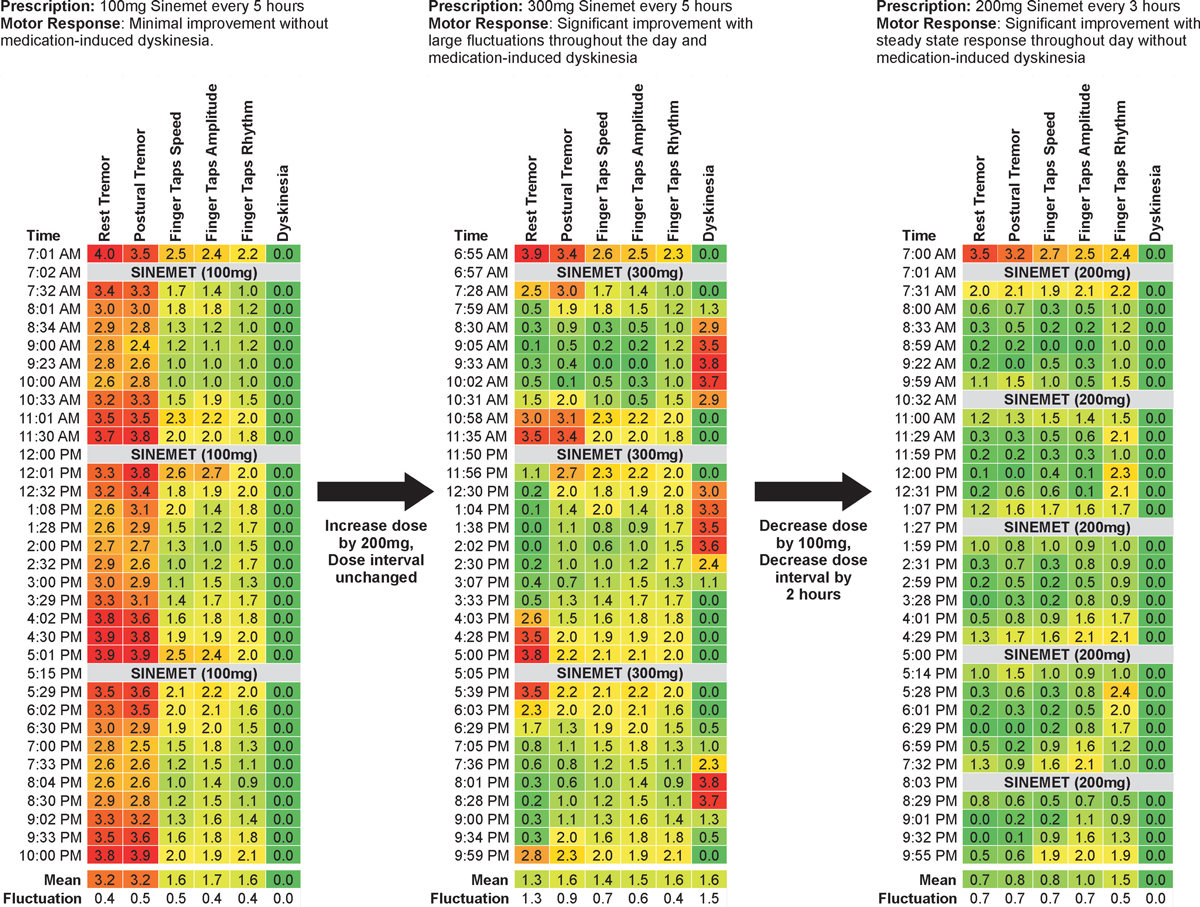Screening and Follow Up After DBS Programming
Kinesia HomeView provides a quantitative telemedicine solution for Parkinson’s disease. Using a tablet PC integrated with wireless patient sensing, motor symptoms are tracked continuously throughout the day using automated assessments. Motor fluctuation reports and videos are transmitted via broadband to the Kinesia web application for viewing and reporting. This technology has two important advantages for DBS including patient screening and follow up after programming.

Monitor motor symptoms from patients’ homes
Patient Screening Prior to DBS
It can be challenging for clinicians to determine when a patient is appropriate for DBS therapy. One indication can be when medication is no longer effective and the patient is experiencing severe motor fluctuations during the day. Kinesia HomeView reports are specifically designed to capture motor fluctuations and report symptom severity of tremor, bradykinesia, and dyskinesias from patients at home. These reports may be useful as additional information to help clinicians determine if a patient is ready for DBS as indicated by daily motor fluctuations.
DBS Programming Follow-Up
Once a patient has DBS therapy, stimulation settings may be adjusted in outpatient programming sessions. While some motor symptoms such as tremor respond quickly to stimulation setting changes, others such as bradykinesia may take longer to response. Kinesia HomeView can provide a telemedicine solution to track motor symptom response to DBS settings for days after the patient leaves the programming session.
Fluctuation Reports
Kinesia motor trend reports can indicate when Parkinson’s symptoms are not controlled (left), when patients are fluctuating (middle), and when symptoms are well controlled (right).

